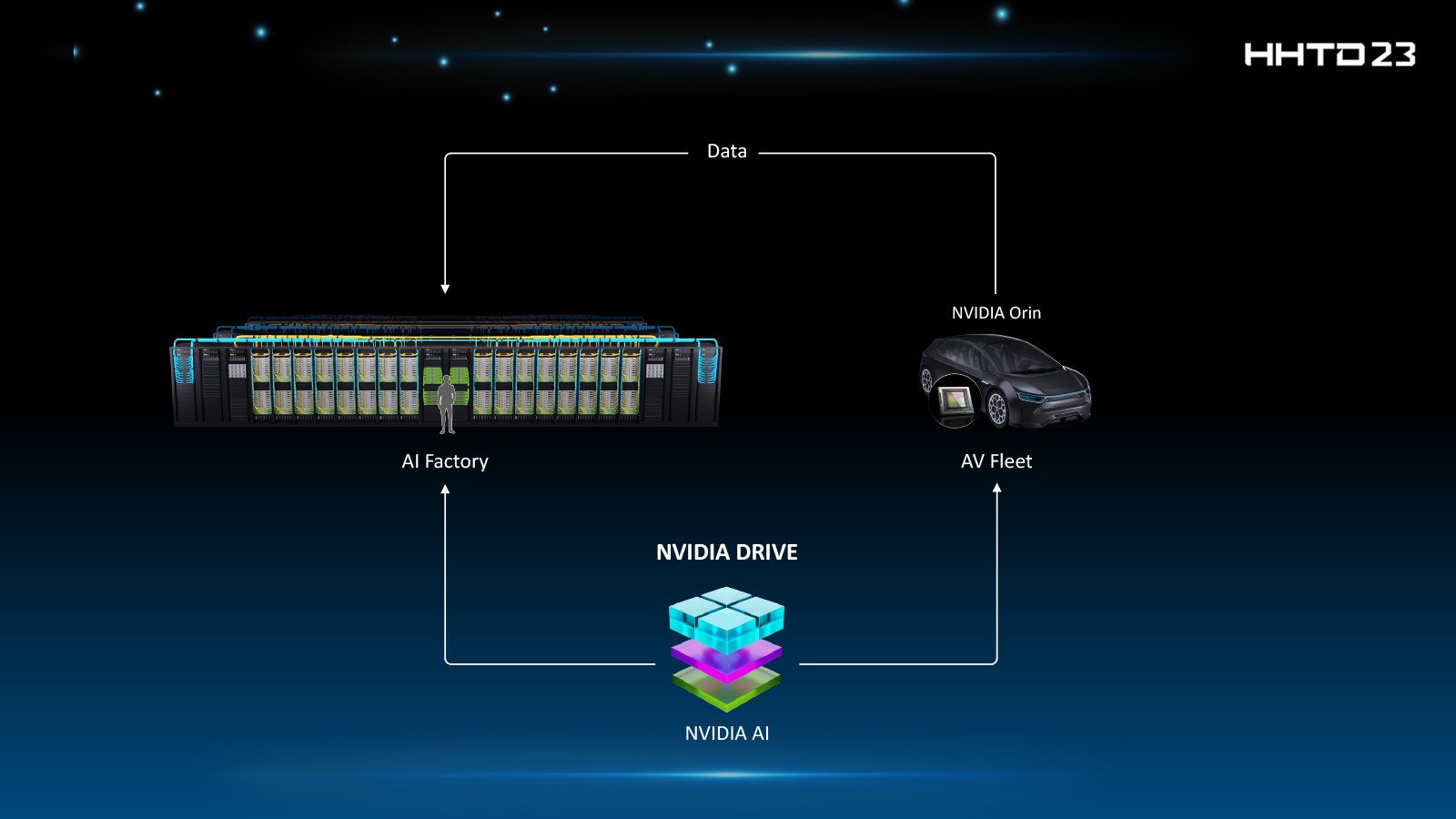 AI
AI
 AI
AI
 AI
AI
Nvidia Corp. said today it’s expanding its ongoing collaboration with Hon Hai Technology Group, better known as Foxconn, to accelerate the development of artificial intelligence-powered electric vehicles and robotics platforms.
As part of the collaboration, Foxconn plans to develop a new class of data centers it calls “AI factories” to power these and other new innovations it hopes to deliver, such as the digitization of manufacturing and generative AI services.
The expanded partnership between the two companies was announced during a fireside chat between Nvidia co-founder and Chief Executive Jensen Huang and Foxconn Chairman and CEO Youn Liu at Hon Hai Tech Day in Taipei.
The main focus of the new initiative is the construction of AI data factories. Foxconn announced it’s planning to build a large number of computing systems based on Nvidia’s central processing units and graphics processing units, as well as its networking technology. These systems will be sold to customers looking to build their own AI data factories, equipped with Nvidia’s hardware and also its Nvidia AI Enterprise software.
Foxconn said the AI factory systems it’s building are based on Nvidia HGX reference designs, and that each platform will feature eight Nvidia H100 GPUs, as well as Nvidia’s GH200 Superchips and networking. The systems will allow Foxconn’s customers to deploy Nvidia accelerated computing within their own data centers, powering internal generative AI workloads and other tasks, such as the training of autonomous robots and self-driving cars.
In addition to building the components for customer’s AI factories, Foxconn said it will develop its very own facility. The Foxconn AI factory will leverage the Nvidia Omniverse platform and Isaac and Metropolis frameworks to meet the electronics industry’s strict production and quality standards, the company said.
According to Foxconn, the goal is to create an AI factory that will enable it to manufacture the next generation of autonomous mobile robots and industrial robots that can travel several miles a day, assemble components in factories, perform quality control inspections and more. As such, Foxconn’s AI factory will focus on training and inference and running virtual world simulations of these systems.
“A new type of manufacturing has emerged — the production of intelligence — and the data centers that produce it are AI factories,” Huang said during the fireside chat. “Foxconn, the world’s largest manufacturer, has the expertise and scale to build AI factories globally. We are delighted to expand our decade-long partnership with Foxconn to accelerate the AI industrial revolution.”
The partnership provides benefits to both companies, with Nvidia getting additional opportunities to extend its GPU acceleration strategy into new industrial markets, and Foxconn being able to expand beyond being the manufacturer of choice for Apple Inc., said Charles King, an analyst at Pund-IT Inc.
“With their AI data factories, it sounds like they envision specialized facilities where business could outsource the grunt work of machine learning and other AI training functions,” King said. “We’ve already seen a form of that from vendors like IBM and Dell, which provide access to validated datasets that are designed to speed the time to value for customer’s AI projects. A purpose-built factory could take that approach a few steps further.”
Besides the focus on AI factories, Foxconn has also selected Nvidia’s Drive Hyperion 9 platform, which is powered by the latest Drive Thor automotive system-on-a-chip, as the basis of its electronic control units for autonomous vehicles.
Foxconn is already a tier-one manufacturer of ECUs based on Nvidia’s older automotive chip, Nvidia Drive Orin, so the upgrade to Nvidia Drive Thor is a natural evolution for Foxconn’s ECU platform. According to Nvidia, the Drive Thor chips offer several new capabilities compared to the older platform, including an integrated sensor architecture for level 3 urban and level 4 highway driving scenarios, and support for high-resolution cameras, radar, lidar and ultrasonic sensors. With its ability to crunch more data, Nvidia Drive Thor promises to drive a big increase in the navigational performance of self-driving cars.
Holger Mueller of Constellation Research Inc. said it was only a few years ago that people were wondering about the future of Nvidia, as most cloud vendors were originally using proprietary approaches to run AI. However, Nvidia has since turned the tables, with it’s GPUs being added to every major cloud platform.
“It’s in this light that Nvidia now stands ready to partner with the major OEMs in order to put out yet more of its platforms,” Mueller said. “Foxconn will standardize on Nvidia and ship its hardware to its customers in droves. That’s the plan and if it succeeds, Nvidia will increase its footprint, relevance and likely its growth by magnitudes.”
Foxconn also committed to using the Nvidia Isaac autonomous mobile robot platform for its newest robotics systems, as well as the Nvidia Metropolis intelligent video analytics platform for its latest smart city solutions.
Support our mission to keep content open and free by engaging with theCUBE community. Join theCUBE’s Alumni Trust Network, where technology leaders connect, share intelligence and create opportunities.
Founded by tech visionaries John Furrier and Dave Vellante, SiliconANGLE Media has built a dynamic ecosystem of industry-leading digital media brands that reach 15+ million elite tech professionals. Our new proprietary theCUBE AI Video Cloud is breaking ground in audience interaction, leveraging theCUBEai.com neural network to help technology companies make data-driven decisions and stay at the forefront of industry conversations.